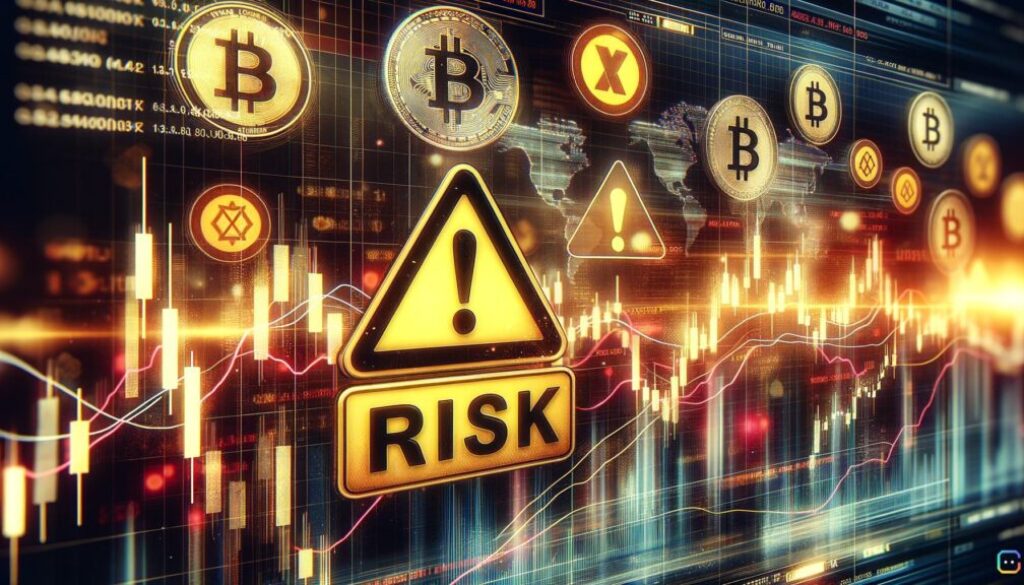Risks of Misinformation in the Cryptocurrency Market

The cryptocurrency market, known for its rapid innovations and high volatility, also presents unique challenges, with misinformation being one of the most significant. A recent incident involving the A16ZE token starkly illustrates this danger. Launched on the Believe platform, A16ZE experienced a dramatic collapse in market capitalization, plummeting from $12 million to a mere $500,000. This drastic drop was not due to a flaw in its technology or a market downturn, but rather a widespread misunderstanding.
The confusion stemmed from a perceived, yet false, association between the A16ZE token, the prominent venture capital firm Andreessen Horowitz (a16z), and Believe’s founder, Ben Pasternak. Rumors and false information spread, causing A16ZE’s value to surge based on unfounded hype. However, the truth quickly emerged when Marc Andrusko of a16z publicly clarified that neither he nor the firm had any involvement with A16ZE or B16Z tokens. This swift dispelling of false information led to an immediate and catastrophic plummet in A16ZE’s market cap, resulting in significant losses for unsuspecting investors. This incident serves as a potent reminder of the critical need for transparency, prompt communication, and rigorous personal research in the highly susceptible cryptocurrency market.
The Volatile Impact of Misinformation on Crypto Markets
Misinformation can significantly manipulate cryptocurrency prices and erode investor trust. In the fast-paced world of crypto, where social media often acts as a primary news source, the line between genuine information and deceptive claims can blur. While social media platforms can be excellent for informing about potential projects and fostering community, they also possess a double-edged nature, easily deceiving individuals into believing something is legitimate when it is not.
The A16ZE token’s value plummeting due to false information linking it to a major venture capital firm is a stark example. This incident caused widespread investor panic and substantial losses, highlighting the critical need for unbiased and verified information in the crypto space. Understanding how misinformation spreads and influences market trends is crucial for making informed and secure decisions in cryptocurrency trading. Unverified claims, often amplified by social media algorithms, can create artificial hype, leading to pump-and-dump schemes or, as seen with A16ZE, sudden market corrections when the truth comes to light. This erosion of trust, once established, can be challenging to rebuild, impacting not just individual assets but the broader market’s integrity.
Navigating the Crypto Landscape: The Power of Due Diligence
Given the inherent volatility and susceptibility to misinformation, exercising thorough due diligence is paramount for anyone venturing into the cryptocurrency market. This isn’t just a recommendation; it’s a crucial step for navigating the risky digital asset landscape.
So, what does thorough due diligence involve when it comes to crypto assets? It means digging deep and examining multiple facets of an investment, including:
- Technical Aspects: Understanding the blockchain technology, smart contracts, and the project’s roadmap. Is the technology sound? Is the code audited?
- Financial Aspects: Analyzing the tokenomics, market capitalization, trading volume, and distribution. Is the project financially sustainable?
- Regulatory Aspects: Checking for compliance with relevant laws and regulations in different jurisdictions. Is the project operating legally?
- Security Aspects: Assessing the project’s security measures to protect against hacks and vulnerabilities. Has it undergone security audits?
- Team and Community: Researching the credibility and experience of the development team, and the strength and engagement of the community. Are the founders transparent and reputable?
Financial advisors also play a key role in guiding clients through this complex process, helping them align potential crypto investments with their broader financial goals and personal risk tolerance. Their expertise can provide a structured approach to assessing digital asset risk, ensuring investors make decisions based on facts, not hype.
Safeguarding Your Investments: Essential Risk Management Strategies
Beyond thorough research, implementing robust risk management strategies is essential for protecting your capital in the volatile crypto market. Even with the best due diligence, market conditions can change rapidly, and unforeseen events can impact asset values.
Two fundamental and highly effective risk management strategies include:
- Diversification: This involves spreading your investments across different cryptocurrencies and various blockchain projects. The idea is simple: don’t put all your eggs in one basket. If one asset underperforms or faces an unexpected challenge, the impact on your overall portfolio is mitigated by the performance of other assets. Diversification can include investing in different categories of crypto (e.g., Layer 1s, DeFi, NFTs), different industries, and even different market caps.
- Position Sizing: This strategy dictates how much capital you allocate to each individual trade or investment. Combined with a careful assessment of the risk-reward ratio, position sizing transforms trading from a speculative gamble into a well-calculated endeavor. It involves determining the maximum amount you are willing to lose on a single trade and then sizing your position accordingly. For example, if you decide you’re only willing to risk 1% of your total capital on any given trade, you adjust your investment amount based on your stop-loss level.
Implementing these and other prudent risk management techniques is crucial. They not only protect against significant losses during market downturns or misinformation-induced panics but also promote long-term success and sustainability in the unpredictable cryptocurrency market.
Conclusion
The A16ZE incident serves as a stark warning: misinformation can wreak havoc in the cryptocurrency market, leading to rapid devaluations and substantial investor losses. The decentralized nature of crypto, while offering freedom, also places a greater onus on individual investors to be discerning and cautious.
In a landscape where narratives can shift prices more rapidly than fundamentals, the importance of transparency and prompt, accurate communication from project teams cannot be overstated. Equally, for investors, the lesson is clear:
- Always verify: Do not rely on social media hype or unconfirmed rumors.
- Conduct thorough research: Understand the project, its technology, its team, and its market.
- Implement risk management: Diversify your portfolio and manage your position sizes.
By prioritizing education, skepticism, and disciplined investment strategies, participants can better navigate the inherent risks of the crypto market and protect themselves from the damaging effects of misinformation.


